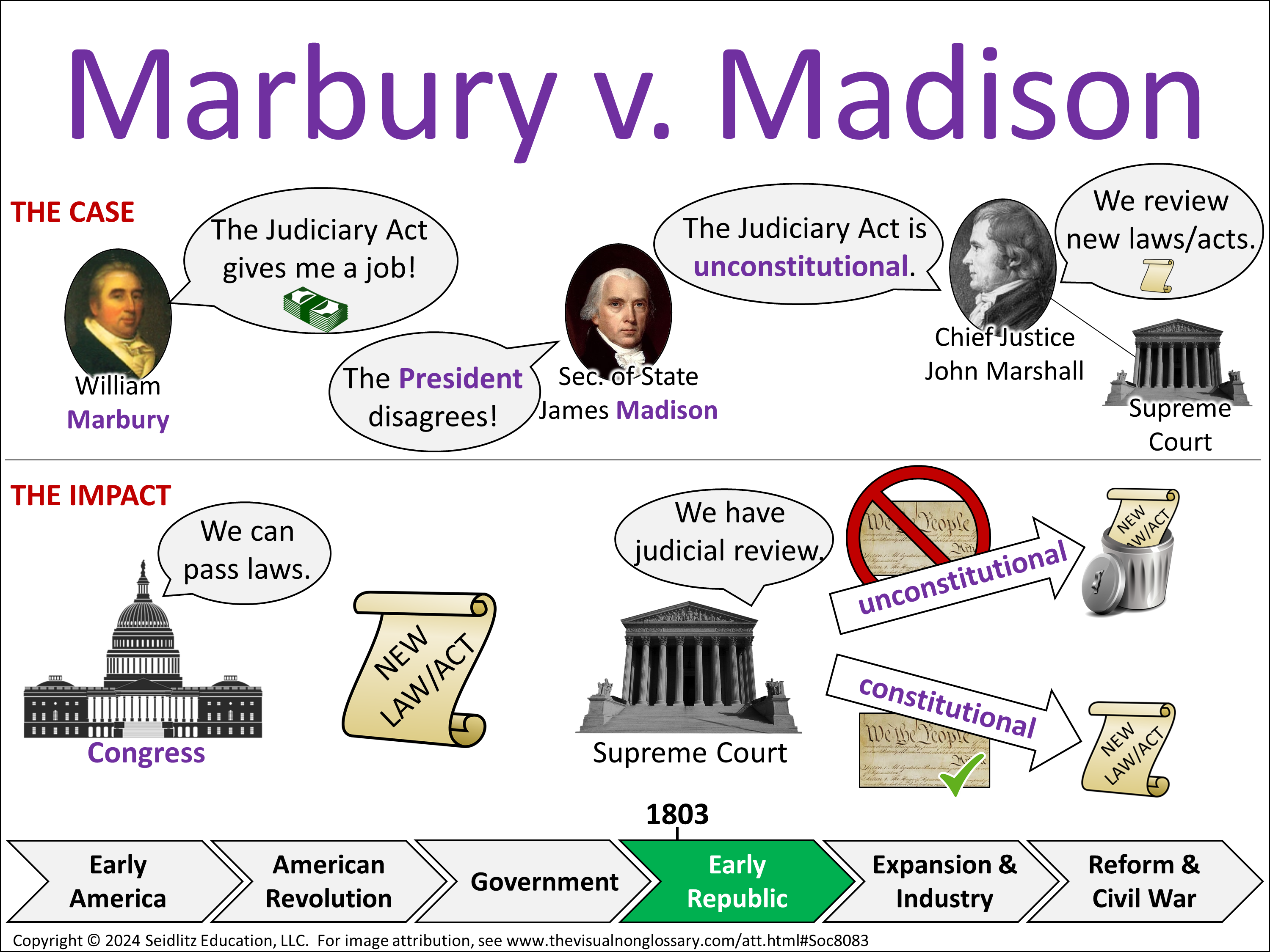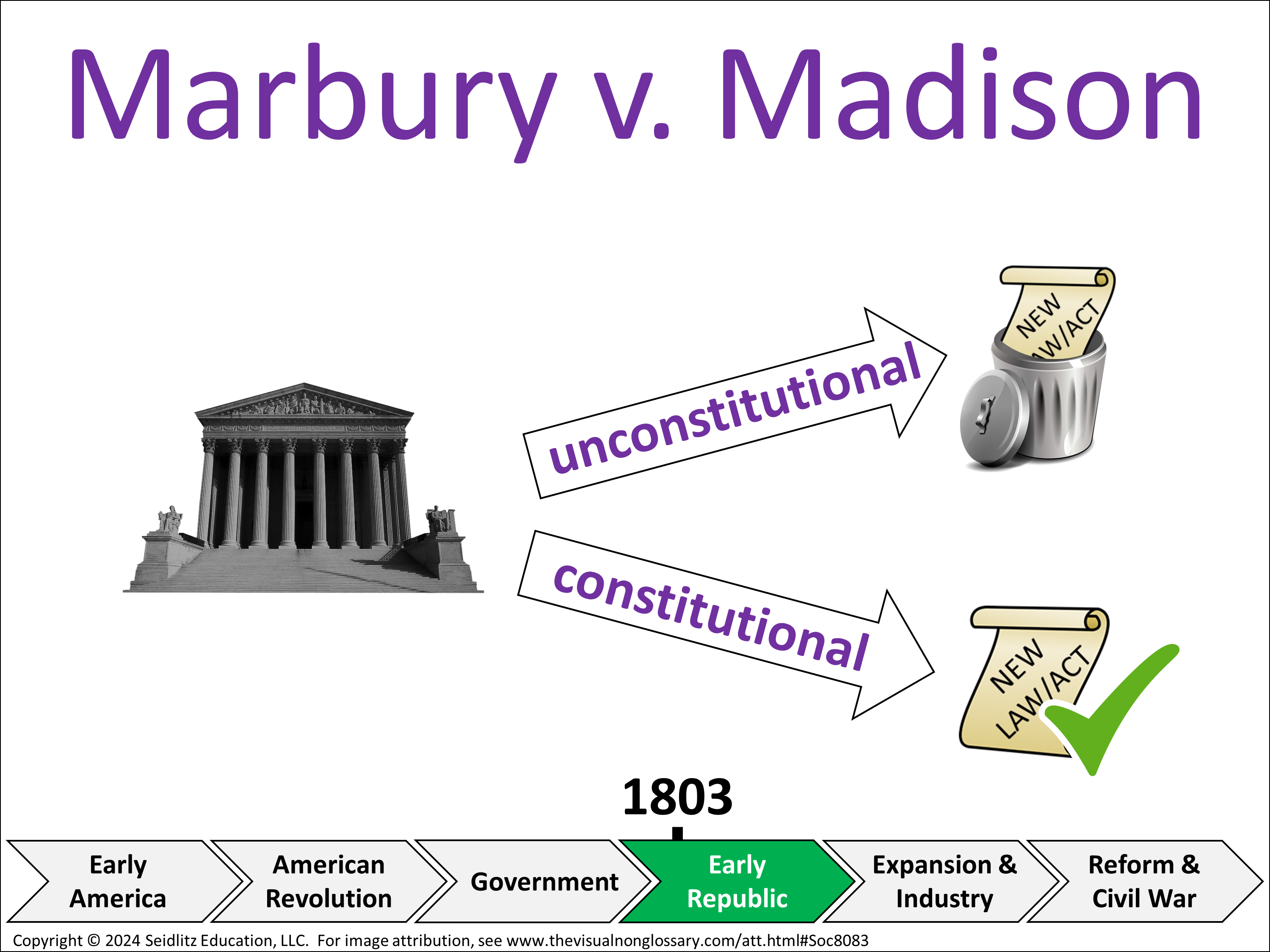Marbury v. Madison: US History 1450-1877 (8th) 🌐 Ver en Español
TEKS:
| 8th | 8.18(A), 8.18(B), 8.22(A) |
- Visual
- Word wall visual
- Lesson Plan
- Lesson Materials
Observational
What occurred in the case of Marbury v. Madison?
In the case of Marbury v. Madison, ...Relational
How is Marbury v. Madison related to checks and balances?
Marbury v. Madison is related to checks and balances because...Inferential
If Marbury v. Madison did not occur, how would the Constitution be affected today?
If Marbury v. Madison did not occur, I think the Constitution...
The Supreme Court is shown as deciding if a law is constitutional or unconstitutional.
The case involved both the president and Congress.
The timeline places the case in the early years of the republic.
A law connected to the case was the Judiciary Act of 1789.
The outcome changed the powers of the Supreme Court.
After the observational question, randomly call on one or more students to share what they or their partner answered. Then ask the class, “Did anyone notice…?” using the suggestions above or anything else you’ve noticed.
Why did the Court get the power to stop unconstitutional laws?
What would government look like without judicial review?
Why did Madison refuse to deliver Marbury’s commission?
How did rivalry between Adams and Jefferson affect the case?
How does this case still affect laws today?
After students have shared what they notice, ask the class, “Did anyone wonder…?” using the suggestions above or anything else you might think is interesting or relevant to the lesson.
To the observational question, What occurred in the case of Marbury v. Madison?
LOW-LEVEL
In the case of Marbury v. Madison, the Supreme Court said it could cancel a law if it does not follow the Constitution.
HIGH-LEVEL
In the case of Marbury v. Madison, the Supreme Court decided that a part of the Judiciary Act was unconstitutional. This decision established judicial review, which is the power to decide whether laws follow the Constitution.
Emphasize and celebrate each student’s use of the key vocabulary to support a culture of “no wrong answers.”



